When you think of Lima, you probably imagine ceviche, beaches, and colonial balconies. But did you know that, in the heart of Miraflores, hides an ancient Peruvian pyramid that has survived time and oblivion? If you want to know the best-kept secret of the city, come with me to discover the Huaca Pucllana: its history, its essence, and the mysteries that few dare to tell.
Huaca Pucllana: History, how to visit it, and secrets you did not know
What is Huaca Pucllana?
The Huaca Pucllana is an ancient administrative and ceremonial center that belonged to the Lima Culture, which inhabited the city between 200 and 700 AD. It stands out for its impressive stepped pyramid of 25 meters high, a clear reflection of the organization and construction skills of those early settlers.
This truncated mud pyramid, almost 500 meters long and 100 meters wide, still stands, defying time and the modern city of Lima that grew up around it.
Location
This pyramid in Peru is located southeast of Lima main square, on the left bank of the Rimac River. Just two kilometers from the cliffs of the coast, in the district of Miraflores in the capital of Lima, Peru. It is surrounded by the streets General Borgoño, Elías Aguirre, and García Calderón, and today, this archaeological site surprises those who visit the Peruvian capital.
The origin of the name "Huaca Pucllana"
The name "Huaca Pucllana" comes from the Quechua: "huaca" which means something sacred and "pucllay" which means to play or to celebrate. According to ancient documents, Pedro Chumbi Charna referred to the site as Pullana or Puliana. It is believed that important ceremonies and rituals were performed here for the community. Overall, Huaca Pucllana is understood as the "place of sacred games".
Sectors of Huaca
The Huaca is divided into two well-defined sectors that reflect its importance in the culture of Lima. Each space has specific functions that show how ceremonial and administrative life was organized in ancient times.
Religious Sector
The religious sector is centered on the Great Pyramid. In this ceremonial center, the ancients made 20-centimeter holes in the ground to place offerings addressed to their gods. For this reason, mollusks, plant remains, and fish bones were found, all used in important rituals.
Administrative Sector
The administrative sector shows us how they organized their daily life. Nine precincts and several plazas with posts and sidewalks were recovered, spaces that were probably used for meetings, political decisions, and common community activities.
Weather
Lima has an arid and temperate climate on the coast where the Huaca Pucllana is located: you have well-defined and marked seasons.
- Summer season (December-March): Sunny days, clear skies and temperatures that can exceed 28 °C.
- Winter season (June - September): Lima is covered in fog, the sky is usually gray, and temperatures drop to about 15 °C, although the cold is not extreme.
- Spring and autumn: These are mild seasons, ideal for touring the site without sweltering heat or intense cold.
Best time to visit Huaca Pucllana
The Huaca Pucllana can be visited at any time, but between April and November the weather is cooler and more pleasant. During those months, there is less rain, the sky is usually cloudy, and walking around the site is more comfortable. It is a good time to get to know its history without the heat or humidity of Lima's summer.
History of Huaca Pucllana: Occupational Sequence
First inhabitants: Lima culture (200 A.D. - 700 A.D.)
Centuries ago, its first settlers were the Lima Culture. Between 200 and 700 A.D., they built large plazas and temples in the valleys of Lurin and Chancay. Their works, made with small adobe bricks, formed a very special ceremonial city. Thus began the history of a place that was the center of meetings, rituals, and daily life.
Huaca Pucllana during the Wari occupation (820 A.D. - 1000 A.D.)
Years later, the Huaca was abandoned by the original inhabitants and was occupied by the Waris between 820 AD and 1000 AD. This culture, with its capital Ayacucho, spread along the coast, the highlands, and even reached the jungle.
In the huaca Pucllana, the Waris built a cemetery for their elite, where they buried their dead along with ceramics, textiles, and other precious objects. In addition, human offerings were discovered, an act reserved to pay homage to the most important members of their society.
Arrival of the Ychma culture at Huaca Pucllana (1000 A.D. - 1400 A.D.)
After the fall of the Wari empire, new settlers arrived: the Ychma. Between 1000 and 1400 AD, fishermen and farmers of this culture settled in the area. Although they tried to restore some ancient constructions, their works were simpler and more fragile. Their main religious center was located in Pachacamac, but the huaca was still an important place. Of the Ychma they have found vessels, remains of houses, and even a small cemetery that still keeps secrets to be discovered.
Huaca Pucllana in the Colony and the Republic
During colonial times in the sixteenth century, the Huaca became the private property of the priest Don Pedro Chumbi Charnan, known as the "Cerrito de la Pucllana". Later, taking advantage of its height, the colonists used the Huaca Pucllana as a military guard post. After the Independence, it continued to fulfill this strategic role.
During the civil war between Castilla and Echenique, the latter took refuge there for six months before being defeated in the battle of La Palma. Thus, the huaca continued to be a silent witness of great historical moments.
Huaca Pucllana 20th Century: Urban Growth and Impact
At the beginning of the 20th century, Lima grew rapidly, destroying many archaeological sites and natural areas. The Marsano family, owners of the Compañía Urbanizadora Surquillo, lotized the Huaca Pucllana to sell the land after leveling the area. Thus, Pucllana went from having more than 18 hectares to only 6 hectares in a few decades. The destruction stopped only in 1981 with the investigations carried out by Dr. Isabel Flores Espinosa and the foundation of the Huaca Pucllana Site Museum in 1984, which saved what was left of the site.
Huaca Pucllana today
Today, the Peruvian pyramid is protected by special laws and was recognized as Cultural Heritage of the Nation on November 26, 2011. Thanks to its unique history, it has become one of Lima's main tourist attractions, attracting thousands of travelers every year.
Important cultural aspects of Huaca Pucllana
Huaca Pucllana Architecture: Resistant to the earthquakes
The Huaca has an architecture based on small rectangular adobe blocks, placed vertically and joined with mud mortar. Its mud walls, carefully aligned, formed patios, plazas and ramps that connect the different ceremonial spaces. Thanks to this design, the site withstood earthquakes and maintained its importance as an administrative and religious center.
Constructive Technique of the Huaca Pucllana
The Huaca Pucllana, built 1,500 years ago by the Lima Culture, used small adobe blocks using the "bookcase technique", which consists of placing adobe vertically with mortar only above and below. In addition, they alternated the "trapezoidal panel technique" to reinforce the walls, achieving structures that, to this day, resist earthquakes better than many modern constructions. As noted by archaeologist Isabel Flores Espinoza, these techniques show the impressive skill of the ancient builders.
Function of the Huaca Pucllana
The Peruvian pyramid was an administrative and ceremonial center of the Lima Culture, which belonged to the Lima Culture, a civilization that flourished between 200 and 700 AD. This impressive adobe complex served as a space where religious ceremonies and important political activities took place. It also functioned as a meeting place for society's leaders, who reinforced their authority through rituals. Its pyramidal structure shows the ingenious management of resources and the great social organization that characterized this era.
The ceramics and textiles of the Huaca
The findings at Huaca Pucllana show how ceramics and textiles reflected the marine environment and beliefs of the time. Fish such as sharks appear on vessels and textiles, revealing a strong link to the sea. These representations were not decorative: they conveyed ritual and social meanings. The designs also served to mark important moments, such as funerals or remodeling.
Importance of the Shark in Huaca Pucllana
The shark had a symbolic and sacred role in Huaca Pucllana, related to rituals and architectural changes. Vessels and textiles with their figures have been found, as well as bone remains used in banquets and offerings. Its presence indicates an exclusive marine cult for certain groups. These rituals, including sacrifices, reinforced the spiritual connection with the ocean.
What you will see in your visit to the Huaca Pucllana
The major pyramid of Huaca Pucllana
The great Peruvian pyramid of Huaca Pucllana is a ceremonial center of stepped and truncated form, It has 7 levels or platforms that reach 25 meters high. It measures 500 meters high and is built with small adobe blocks placed vertically, using the bookcase technique. Each platform is connected through passageways and ramps that facilitate agricultural and ceremonial control from the top. Their walls, reinforced with benches, gave the effect of elevated stages. The smaller plazas at the top indicate a more restricted access where ceremonies were held.
Courtyard of the ceremonial gate and the ceremonial ramp
Access to the pyramid of Huaca Pucllana was by long zigzagging ramps, more than four meters wide, some painted yellow to highlight its importance. Before ascending, visitors crossed the Patio de la Portada, a rectangular space with a monumental entrance to the west. Large posts guarded this entrance, emphasizing the grandeur of the place. The ramp, connected to an annexed enclosure and a plaza, led to the heights of the ceremonial center.
The administrative sector
The administrative sector, located in the lower part of Pucllana, is formed by enclosures, squares with posts and benches. Although the whole huaca has a ceremonial meaning, this area was also key to organizing work and controlling tribute. From here, coordinated community life with order and purpose. Each space was designed with day-to-day needs in mind.
Native flora and fauna park
At the end of the tour, a park that celebrates the native flora and fauna awaits you, connecting in a simple way with the nature of the past. Here you will see plants such as corn, guava, prickly pear, and Tara, along with camelids, creole ducks, guinea pigs, and Peruvian hairless dogs. The latter, bred in Huaca Pucllana for a long time, are today the Cultural Heritage of the Nation. The visit shows how the heritage of ancient cultures is still alive in the daily life of the people of Lima.
The Huaca Pucllana Site Museum
The museum was inaugurated in 1984, it houses a large collection of archaeological pieces, a product of the excavations carried out between 1981 and 2020 by Dr. Isabel Flores Espinoza. The museum has an exhibition hall, a circuit through the archaeological zone, a park of native flora and fauna, service areas, and administrative spaces, all designed to make the visit enjoyable and close to history.
In the exhibition hall, you will see ceramics, textiles, tools, and offerings, including ceremonial pitchers, ceramic sculptures of sharks, and miniatures used in ancient rituals. You will also find colorful textiles from the Wari culture and offerings discovered in tombs, accompanied by infographics.
How to visit the Huaca Pucllana without missing a thing
How to get to Huaca Pucllana?
To get to the Huaca Pucllana you must first arrive in Lima, the capital of Peru. From there, it is already very easy to go to the district of Miraflores, where the huaca is located. Besides, the area is well connected and you will have these options:
- Public transportation: From downtown Lima, you can take a bus or a combi, but the most practical way is to use the Metropolitano. You get off near Angamos Avenue and walk to Arequipa Avenue, a short distance of about 20 minutes to get there.
- Cab or private service: Another convenient option is to order a cab through apps such as Uber, Cabify, or Beat from anywhere in Lima. This way is safe, fast, and the cost will depend on how far you are and the rate you agree on.
- Organized tour: You can also choose a tour that includes transportation and a specialized guide, which makes the whole tour much easier. In addition, it will allow you to learn more details about its history and interesting facts about the site without worrying about mobility.
Cost of entry
Huaca Pucllana tickets general admission costs S/. 15 in the morning and S/. 17 at night. For your convenience, I recommend that you bring cash to avoid any inconvenience during your visit.
Hours of operation
You can visit the Huaca Pucllana from 9:00 a.m. to 5:00 p.m.; in the evenings, it reopens from 6:30 p.m. to 9:00 p.m. So choose the schedule that suits you best and enjoy your leisurely stroll.
Interesting fact
The Huaca Pucllana Site Museum is closed on January 1st, May 1st, July 28th and December 25th. Before planning your visit, check these dates to make your experience more complete and without surprises.
Visiting Huaca Pucllana at night: A different experience
If you want to see the Huaca from a different perspective, I recommend a night visit. The lighting highlights the shape and structure of the pyramid, creating an almost magical atmosphere. In addition, the silence of the night helps you imagine what the place would have been like hundreds of years ago.
What to bring to Huaca Pucllana
- Wear comfortable clothes that allow you to walk without problems.
- Bring sunscreen, sunglasses, and a hat or cap to protect yourself from the sun.
- Don't forget to bring water to stay hydrated.
- Carry your camera or cell phone well-charged to capture the most interesting details.
Recommendations for visiting the Huaca Pucllana
- Leave early to take advantage of the best hours of the day.
- Reserve your ticket in advance to avoid waiting.
- Take advantage of guided tours to learn more about the history of the site.
- Follow the marked paths to preserve the site and have a better experience.
Huaca Pucllana: Why should it be on your list of places to visit in Lima?
The Huaca should be on your list because it is not just any ceremonial center; here the Lima culture flourished and left marks that are still alive. Walking on it, you have the honor of traveling to a past full of history and adventure. Moreover, discovering this site is not just about seeing ruins, but about walking through living stories, where every brick was laid with purpose and devotion, connecting you, day or night, with the most ancient spirit of Lima.
Frequently Asked Questions
Which cultures built the Huaca Pucllana?
The Huaca Pucllana was built around 200 A.D. by the Lima culture, which dominated the central coast of Peru. Later, the Wari adapted the site to their own rituals, leaving their mark in every corner. And finally the Ychma culture inhabited this area, being its ceremonial center Pachacamac.
Who discovered the Huaca Pucllana and how was it found?
For years, Huaca Pucllana remained hidden underground until, in 1981, led by Dr. Isabel Flores Espinoza, formal excavations began. Thanks to the efforts of archaeologists and experts, much of the site came to light. Today, the work continues to reveal surprising fragments of its history. Each discovery brings us a little closer to understanding its mystery.
What impact does the Huaca Pucllana have on the history of Lima?
The Huaca Pucllana reminds us that Lima was not born with the arrival of the Spaniards. Long before, there were already organized societies that built true wonders, such as this adobe pyramid.
How to enter and tour the Huaca Pucllana?
You can enter by buying your ticket on site or by booking a tour. There are guided tours in English and Spanish that last about an hour.
Is it worth taking a guided tour of the Huaca Pucllana?
Definitely yes. The guides tell details and anecdotes that do not appear on the signs, making the visit much more enriching.

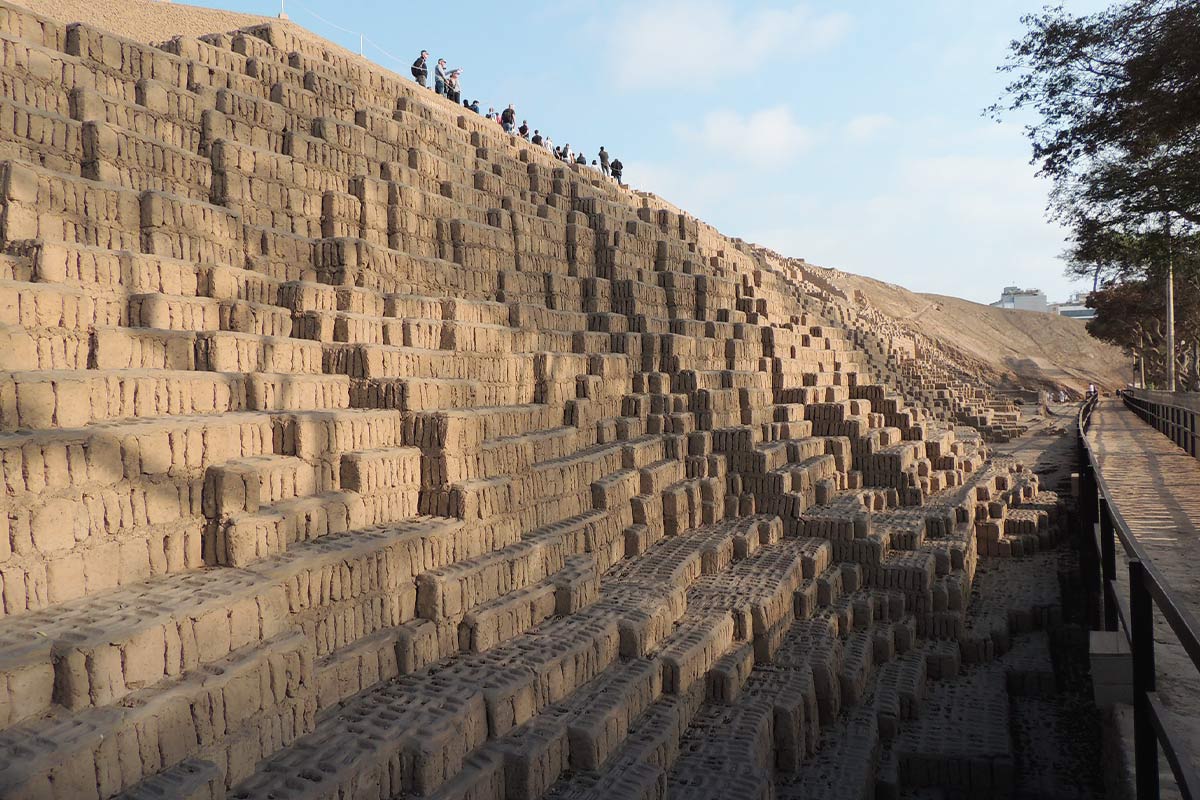
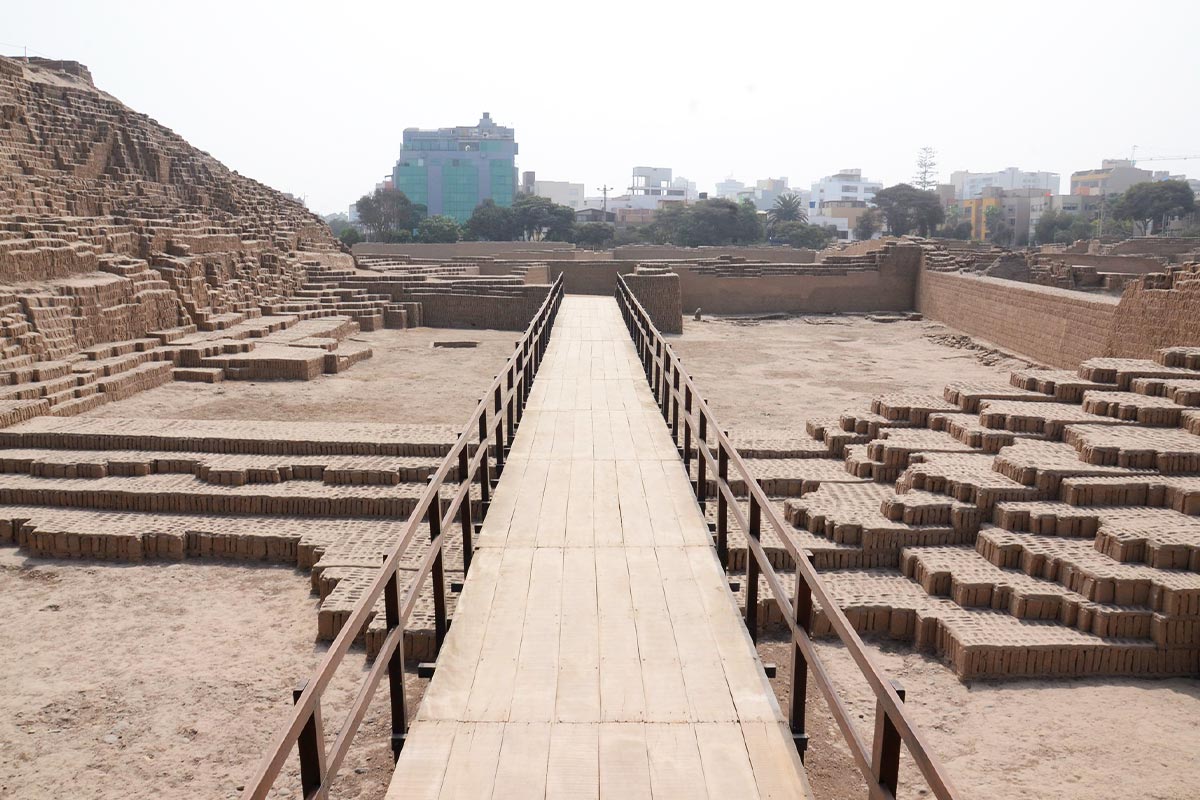

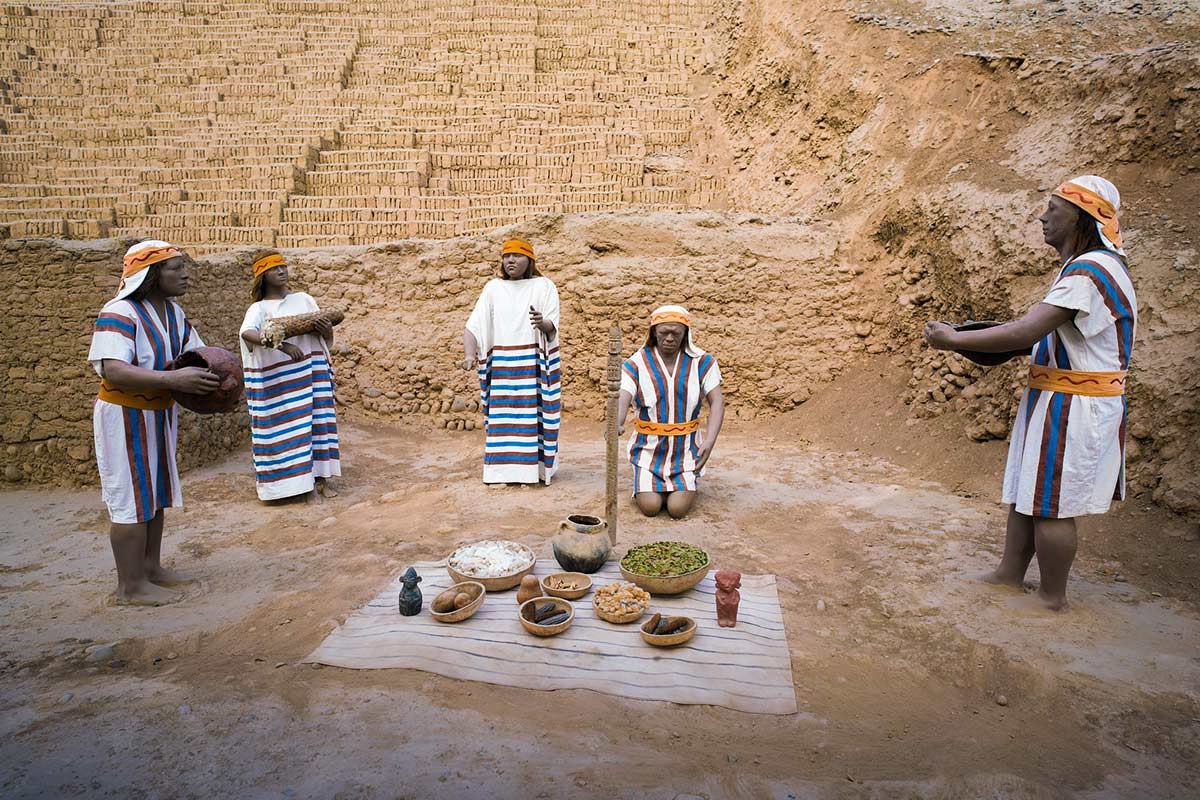
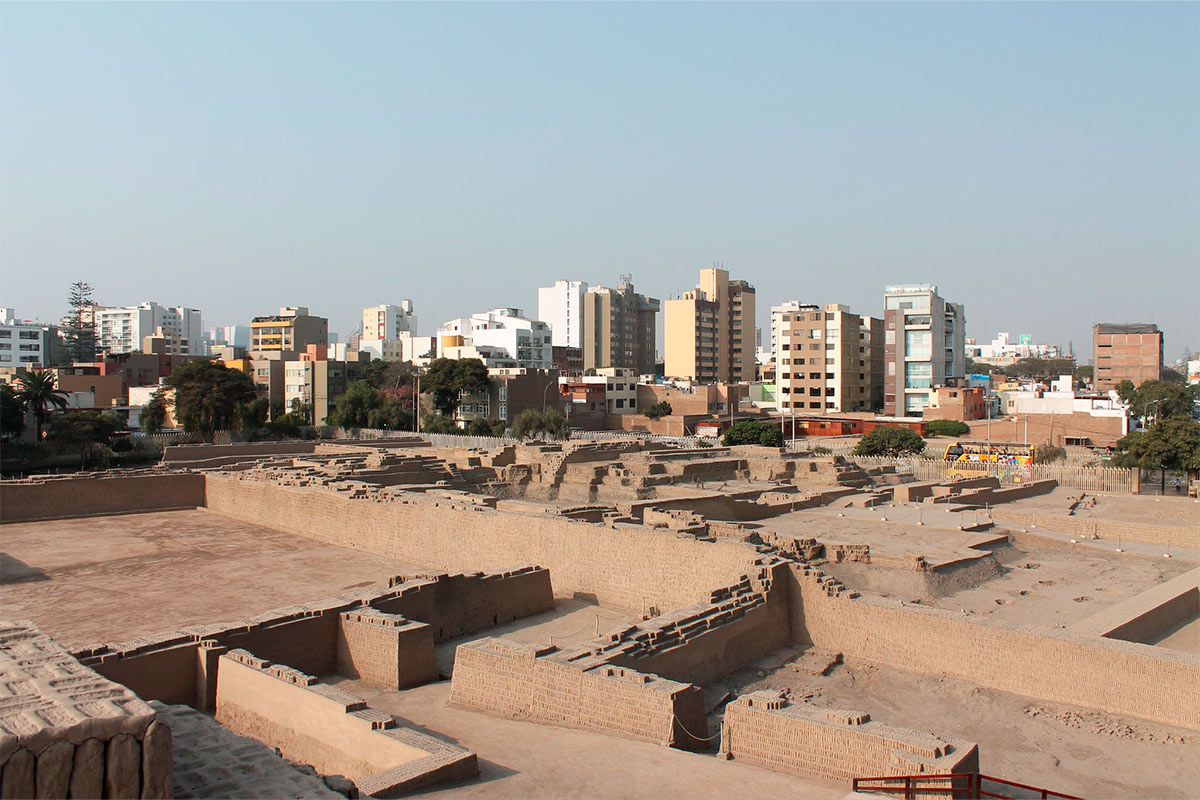

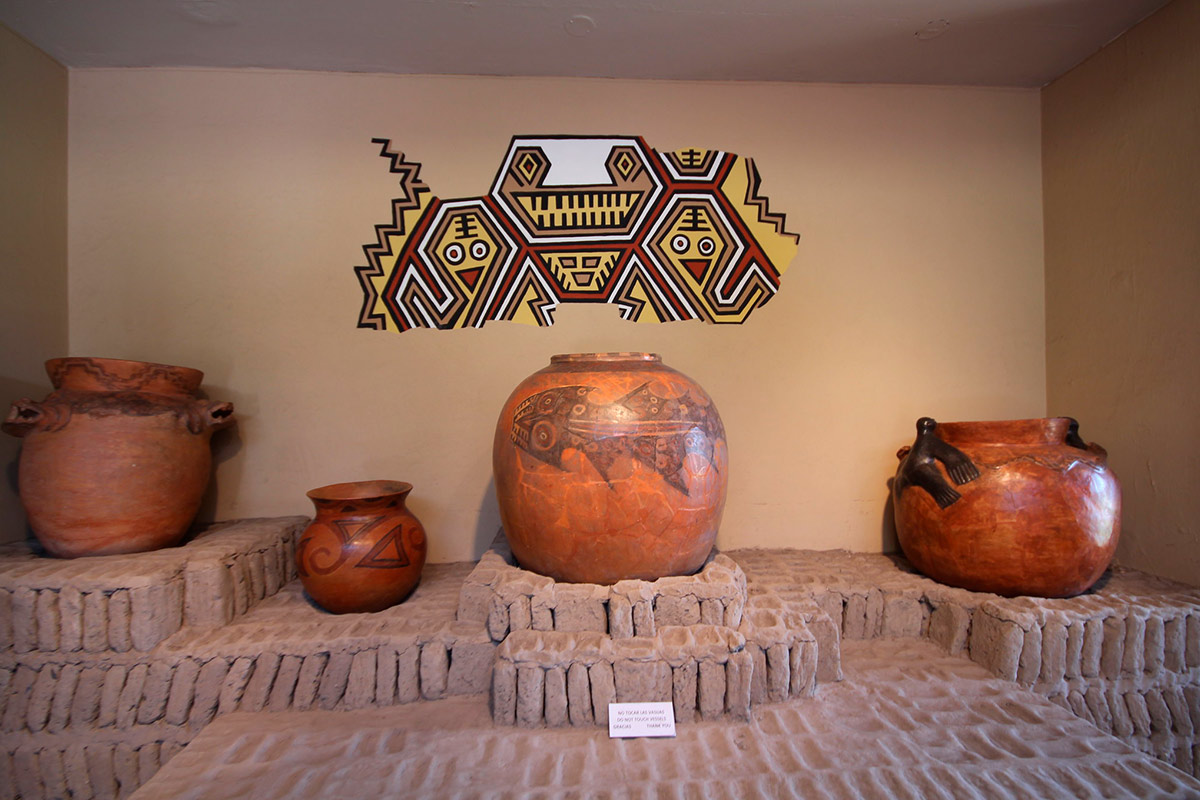
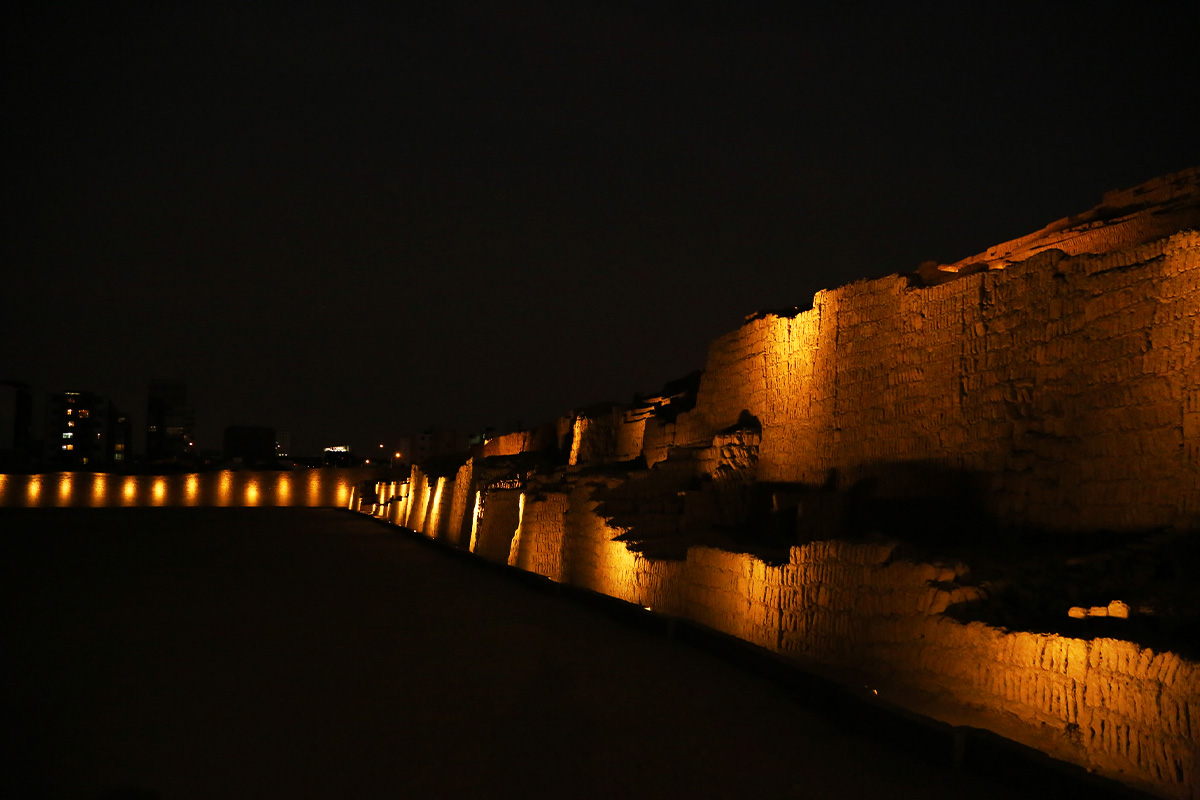
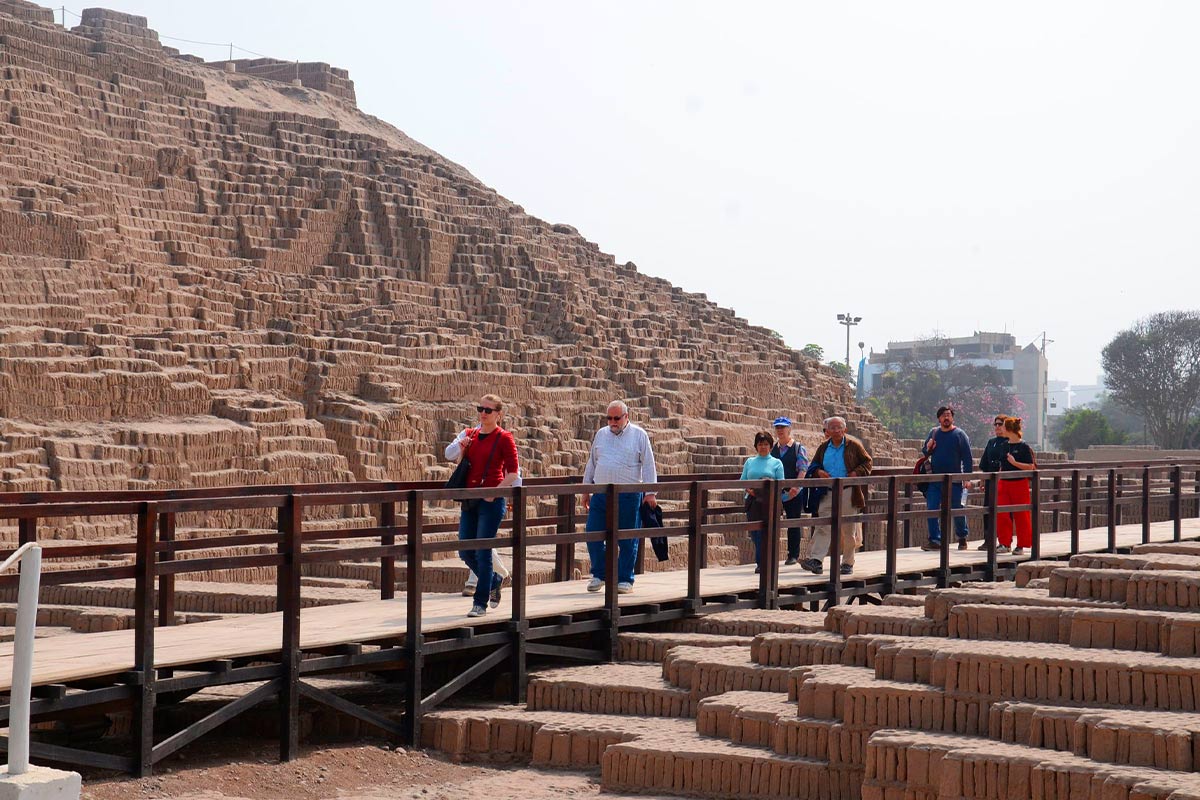
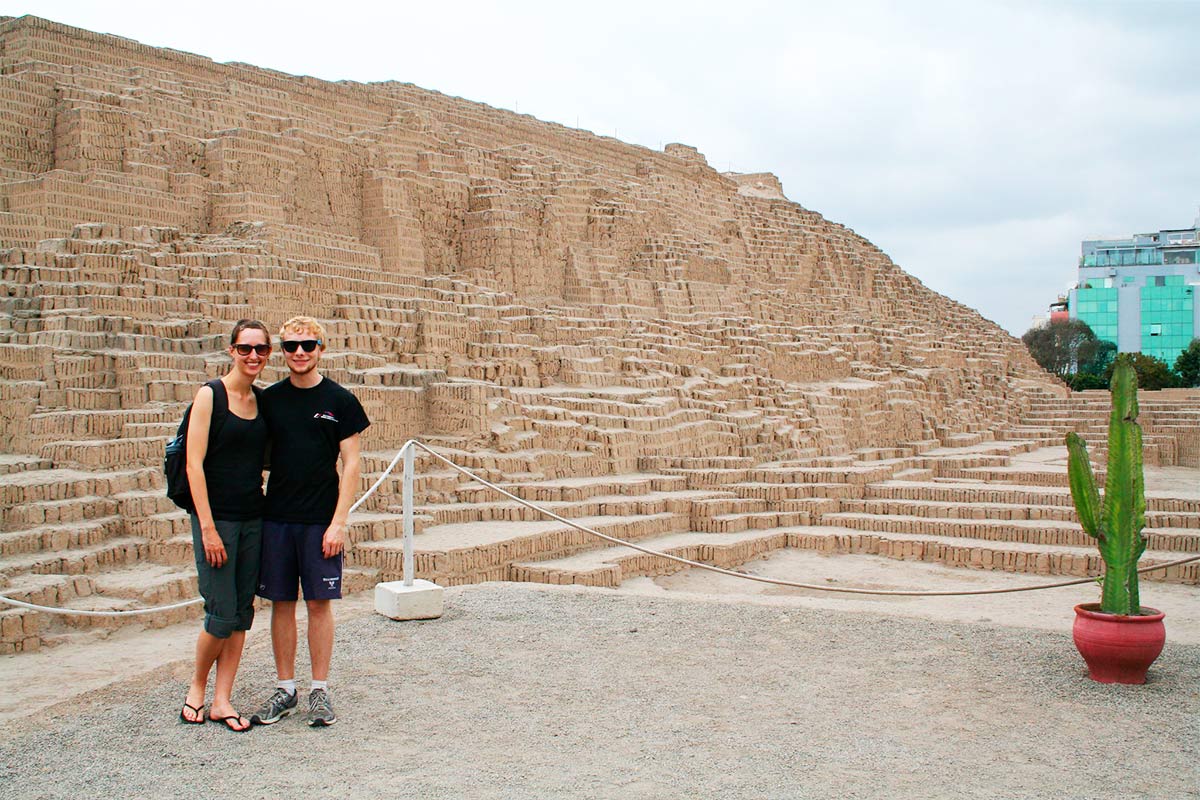

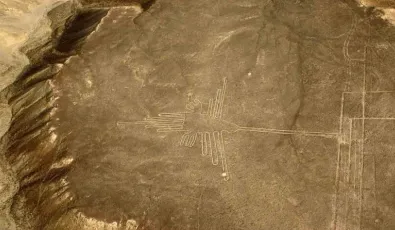
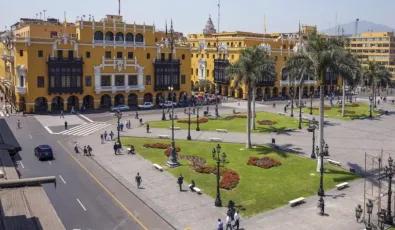
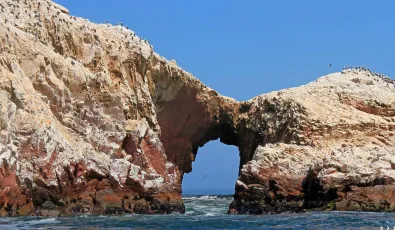
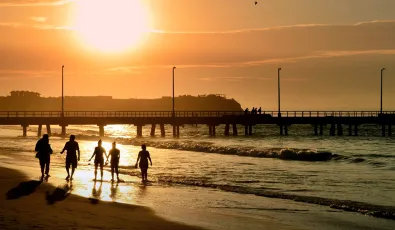
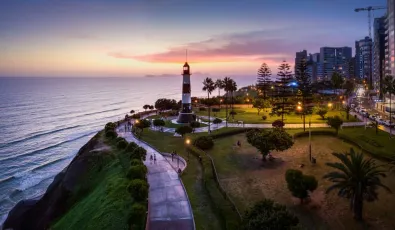

Add new comment